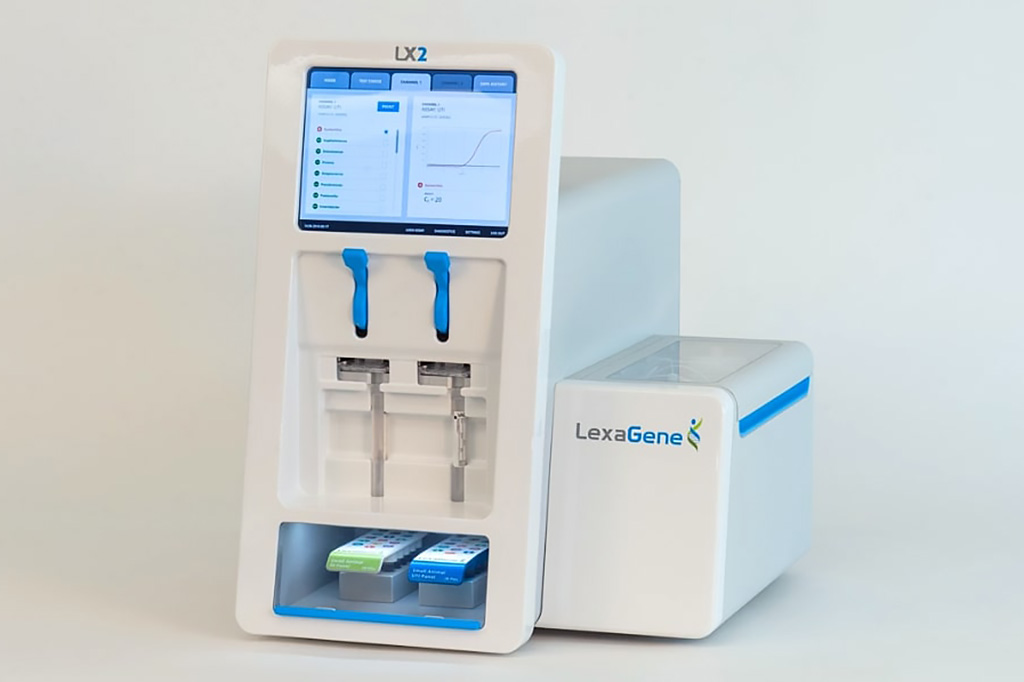LexaGene Accelerates FDA EUA Submission of Rapid, Onsite Analyzer for Detection of COVID-19
By LabMedica International staff writers
Posted on 26 Mar 2020
LexaGene Holdings, Inc. (Beverly, MA, USA), a biotechnology company, is accelerating its Food and Drug Administration (FDA) Emergency Use Authorization (EUA) submission for its rapid, onsite analyzer for the detection of novel infectious diseases such as COVID-19. Posted on 26 Mar 2020
LexaGene develops genetic analyzers for pathogen detection and other molecular markers for on-site rapid testing in veterinary diagnostics, food safety and for use in open-access markets such as clinical research, agricultural testing and biodefense.

Image: The LX Analyzer platform (Photo courtesy of LexaGene Holdings, Inc.)
LexaGene’s microfluidic technology is designed for on-site use and screens for both common pathogens and new bio-threats. One of the hallmarks of LexaGene’s LX Analyzer technology is its open-access feature that allows users to very quickly introduce newly developed assays into the platform for fully automated and rapid detection of novel pathogens. To demonstrate this, LexaGene’s scientists adapted the CDC Coronavirus Diagnostic Panel to the LX Analyzer platform. The CDC panel is comprised of three tests for SARS-CoV-2, the pathogen that causes COVID-19. This CDC panel has been granted EUA from the FDA.
Using LexaGene’s automated LX Analyzer equipped with the adapted CDC Coronavirus Diagnostic Panel, the company successfully detected the presence of the SARS-CoV-2 N-gene RNA in contrived respiratory samples, whereas the severe acute respiratory syndrome (SARS) coronavirus RNA and Middle East respiratory syndrome (MERS) coronavirus RNA tested negative, as expected. In addition, the virions of the unrelated seasonal common cold virus, the human coronavirus OC43 (ZeptoMetrix7) was successfully detected by a specific assay, but tested negative with the CDC Panel, as expected.
“The world needs easy-to-use fully automated pathogen detection instruments operating at points-of-need that can be equipped with tests to detect a novel pathogen within a week of knowing its genetic sequence. For this outbreak – the lack of such technology forced all testing to occur in distant reference laboratories, making rapid decisions on quarantine impossible and making the likelihood of successful containment remote. This shortcoming has arguably cost hundreds of lives to date,” said Dr. Jack Regan, LexaGene’s CEO and founder. “LexaGene expects to be the first company to commercialize an automated open-access microfluidic technology designed for use at the point-of-need that can be configured to detect a novel pathogen in just a week’s time of its emergence – for use on-site to return results in one hour – and improve our chances of successful containment.”
Related Links:
LexaGene Holdings, Inc.














